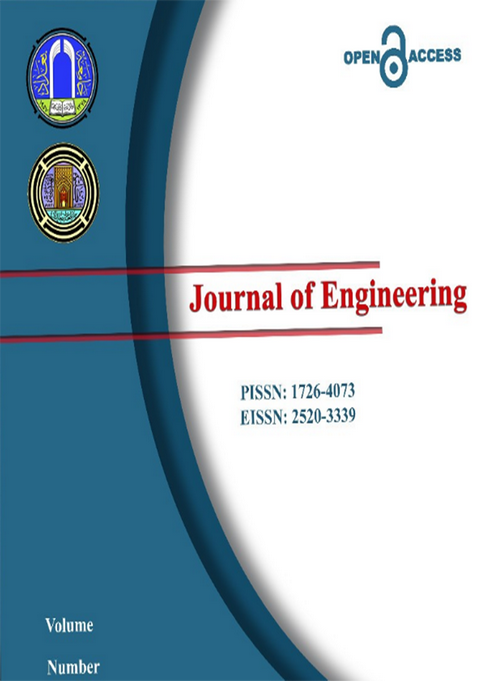Abstract
This paper describes flexural behavior of two spans continuous rectangular concrete beams
reinforced with mild steel and partially prestressing strands, to evaluate using different
prestressing level and prestressing area in continuous prestressed beams at serviceability and
ultimate stages. Six continuous concrete beams with 4550 mm length reinforced with mild steel
reinforcement and partially prestressed with two prestressing levels of (0.7fpy or 0.55fpy) of and
different amount of 12.7 mm diameter seven wire steel strand were used. Test results showed
that the partially prestressed reinforced beams with higher prestressing level exhibited the
narrowest crack width, smallest deflection and strain in both steel and concrete at ultimate
service load, the deflection decreased by (3.60% & 32.49%) and the crack width decreased by
(20.0%) and (75.0%) when increasing the prestressing level from (0.55fpy) to (0.7fpy) for beams
reinforced with one and two strands respectively. Deflection of beams with two strands
decreased by (44.81% & 22.2%) compared with beams of one strand at prestressing level of (0.7
fpy) and (0.55 fpy), respectively. At ultimate load, using ACI-Code recommended moment
redistribution led to more agreement between theoretical and experimental loads for both
ordinary reinforced and partially prestressed beams.
reinforced with mild steel and partially prestressing strands, to evaluate using different
prestressing level and prestressing area in continuous prestressed beams at serviceability and
ultimate stages. Six continuous concrete beams with 4550 mm length reinforced with mild steel
reinforcement and partially prestressed with two prestressing levels of (0.7fpy or 0.55fpy) of and
different amount of 12.7 mm diameter seven wire steel strand were used. Test results showed
that the partially prestressed reinforced beams with higher prestressing level exhibited the
narrowest crack width, smallest deflection and strain in both steel and concrete at ultimate
service load, the deflection decreased by (3.60% & 32.49%) and the crack width decreased by
(20.0%) and (75.0%) when increasing the prestressing level from (0.55fpy) to (0.7fpy) for beams
reinforced with one and two strands respectively. Deflection of beams with two strands
decreased by (44.81% & 22.2%) compared with beams of one strand at prestressing level of (0.7
fpy) and (0.55 fpy), respectively. At ultimate load, using ACI-Code recommended moment
redistribution led to more agreement between theoretical and experimental loads for both
ordinary reinforced and partially prestressed beams.
Keywords
continuous beams; prestressed concrete; deformation; cracking; redistribution
